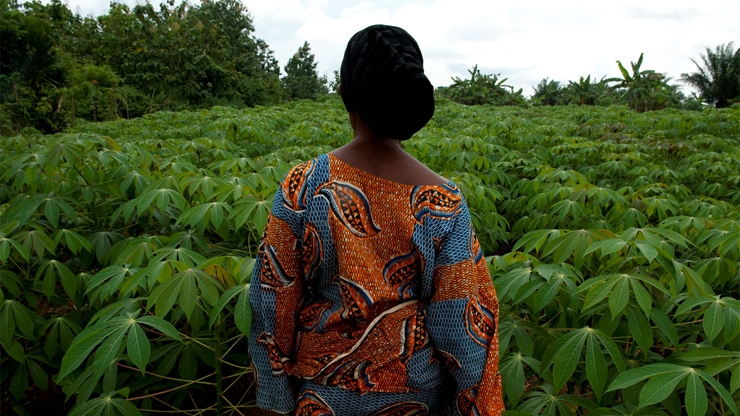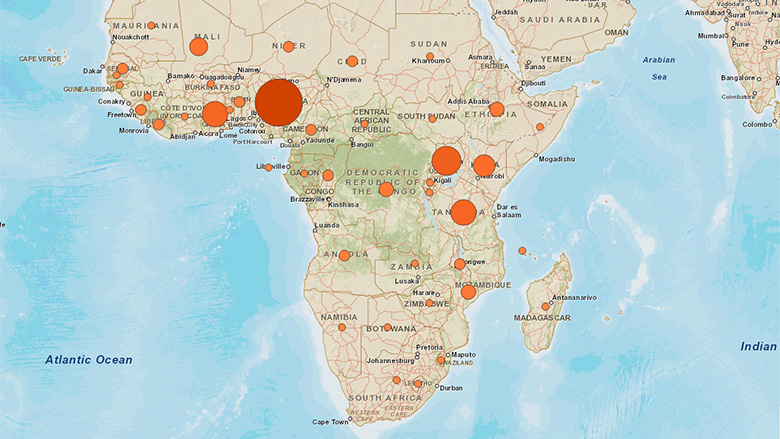Challenge
The Economic Community of West African States (ECOWAS) is home to 254 million people in 15 low-income countries, all of which have low United Nations Human Development Indices. Agriculture accounts for 65% of employment and 35% of gross domestic product (GDP), but poverty is highest in rural areas where most of the population depends on agriculture for subsistence. Agriculture and rural development must be prioritized if the Millennium Development Goals (MDGs) are to be achieved in Sub-Saharan Africa, so the African Union and ECOWAS formulated agriculture development plans that prioritize sustainable land and water management, access to markets, and the reduction of hunger. Nevertheless, agricultural productivity has been declining in Sub-Saharan Africa. Average worldwide cereal yields (2,676 kg/ha) more than doubled Africa’s (1,069 kg/ha) from 1994-2003, seriously damaging Africa’s competitiveness as food imports increased. Spending on agricultural research and extension in Africa, especially regional research, remains low, and linkages between research, extension, farmers, and agribusiness are weak, so that in 2007 farmers adopted less than 10% of proposed technologies.
Solution
The WAAPP works to generate and disseminate improved technologies in the top priority areas identified by the Central Africa Counsel for Agricultural Research (CORAF), including roots and tubers in Ghana, rice in Mali, and cereals in Senegal. The project targets Central Africa’s consumers affected by extreme poverty and agricultural producers as beneficiaries of the program. Researchers, extension agencies, and universities were all brought in to generate and disseminate technology supported by the program. In order to enable regional cooperation in technology generation and dissemination, common genetic material, pesticide, and crop protection product regulations were standardized at the ECOWAS level, while a regional agriculture technology and research skills information system was developed. National Centers of Specialization (NCOS) were developed to coordinate top research and development (R&D) priorities with regional priorities and share results.
Results
As of September 2012, WAAPP had achieved the following results:
- There were 253,881 direct project beneficiaries
- 37 new technologies were released by NCOS, all of which improved yields by at least 15% compared to the control technology
- 166,938 hectares of land have been improved by these technologies
- 57,129 Ghanaian producers have adopted project technologies
- 20,000 Senegalese producers have adopted project technologies
- 53,450 Malian producers have adopted project technologies
- ECOWAS has adopted regulations for the registration of genetic materials and pesticides
- CORAF maintains a web-based information system on agricultural technologies and research skills that the organization collects
- Each country now operates a harmonized monitoring and evaluation system for data collection, analysis, and reporting
Bank Group Contribution
The International Development Association (IDA) has committed US$45 million to WAAPP.
Partners
ECOWAS and the African Union provided agriculture and rural development frameworks that the project worked with and strengthened. CORAF helped develop agriculture research priorities for Ghana, Mali, and Senegal as well as implemented the project at local levels. Project implementation at the national level came from the national coordinating units at the Ministry of Food and Agriculture in Ghana, the Agriculture Services and Producer Organizations Support Program in Mali, and the Agriculture Services and Producer Organizations in Senegal.
Moving Forward
In May 2012 the second phase of the project, which includes Senegal and Ghana, received financing. Mali was removed from the second phase of the project due to the political situation.

